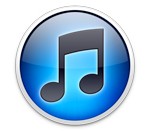You might have picked up some news this morning about malware and viruses and trojans INVADING the quiet tranquility of your Apple computer.
Personal opinion ? Like som much of news – massive exaggeration – and of course – because it is Apple – the bandwagon is in full flight about how the world is about to come to an end …..
It isn’t.
Really – It isn’t.
This article aside (I like Dave Winer a lot – and his point is valid), WITHOUT some calm and sense prevailing – the gap will be filled with rumor, myth and wrong information.
First – some data – I have no idea how many Apple computers there are in the world – but only 600,000 of them have been affected.
There are however estimates of 900 million to 1 billion computers in the world today. So, even if Apple had a 10% of ALL of them (they don’t by a long shot) – that means there are around 100 million Apple computers
Which means that around 0.6 percent of ALL Apples are estimated to have the virus.
OK – so what is the virus ?
Here’s what are friends at F-Secure have to say :
Summary
Trojan-Downloader:OSX/Flashback.I connects to a remote site to download its payload; on successful infection, the malware modifies targeted webpages displayed in the web browser.
Think about that – IF you are one of the substantially less than .6% of Apple computer owners that have been affected – it will mean that the malware will modify certain webpages displayed in the web browser – when you visit them. It doesn’t corrupt your data, destroy your files, spam your address book. It is malware.
OK – but you still want to get rid of it right ?
If you are feeling brave go here – now.
If you are not feeling so brave – and not so technically minded – then still go here – (it is the same page) – and note the first three instructions :
Manual Removal Instructions
1. Run the following command in Terminal:defaults read /Applications/Safari.app/Contents/Info LSEnvironment
2. Take note of the value, DYLD_INSERT_LIBRARIES
3. Proceed to step 8if you got the following error message:”The domain/default pair of (/Applications/Safari.app/Contents/Info, LSEnvironment) does not exist”
For the vast majority of you – statistically 99.4 % of you – when you get that message “The domain/default pair of (/Applications/Safari.app/Contents/Info, LSEnvironment) does not exist” – then know you are safe.
If you don’t get that message – then the instructions 4 onwards – tells you what to do – and that can either be YOU or one of your friendly neighborhood techies :0
Please email me if I can help you further. I am traveling at the moment – but always online 🙂
